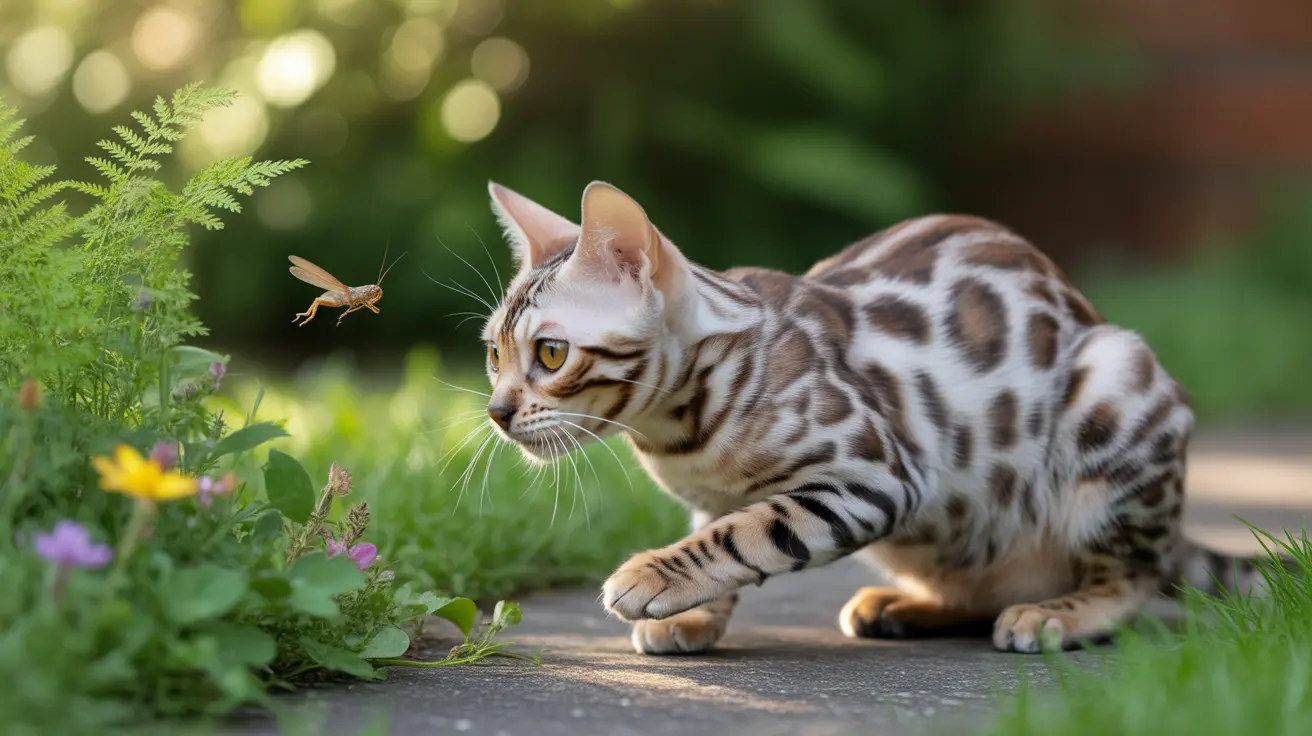Introduction
If you've ever watched your cat stalk and chase insects around the house, you might have wondered: can cats eat crickets? The short answer is yes - crickets are generally safe for cats to eat and can even provide some nutritional benefits. As natural hunters, cats are instinctively drawn to these jumping insects, making cricket encounters a common occurrence for many feline friends.
In this comprehensive guide, we'll explore everything you need to know about cats and crickets, from safety considerations to nutritional benefits, helping you understand when cricket consumption is okay and when it might pose risks to your pet.
The Safety of Cats Eating Crickets
Crickets are non-toxic to cats and generally safe when consumed in moderation. Most cats will encounter these insects during their natural hunting activities, especially outdoor cats. However, there are some important safety considerations to keep in mind:
Wild vs. Commercial Crickets
While wild crickets aren't inherently dangerous, they can carry risks:
- Potential exposure to pesticides or chemicals
- Possible parasite contamination
- Risk of bacterial infections
Commercial cricket products, specifically processed for pet consumption, are typically safer as they undergo quality control measures and proper sanitization.
Nutritional Benefits for Cats
Crickets actually pack a surprising nutritional punch for their size. They contain:
- High-quality protein (up to 58%)
- Essential amino acids, including taurine
- Iron and vitamin B12
- Omega fatty acids
- Chitin (beneficial fiber from exoskeletons)
These nutrients can complement a cat's regular diet, though crickets should never replace properly balanced cat food.
Natural Hunting Behavior and Cricket Consumption
When cats chase and eat crickets, they're expressing natural hunting instincts. This behavior provides both mental and physical stimulation, making it a form of environmental enrichment for indoor cats. The quick movements of crickets trigger a cat's predatory response, making them particularly engaging prey.
Potential Risks and Warning Signs
While cricket consumption is generally safe, watch for these potential issues:
- Digestive upset from overconsumption
- Allergic reactions (though rare)
- Symptoms of parasitic infection
- Vomiting or diarrhea
- Changes in appetite or behavior
Guidelines for Cricket Consumption
Follow these guidelines to ensure your cat's safety:
- Don't intentionally feed wild crickets to your cat
- If using cricket-based treats, choose commercial products
- Monitor your cat for any adverse reactions
- Maintain regular deworming schedules if your cat frequently hunts
- Consult your veterinarian before introducing cricket-based products
Frequently Asked Questions
Are crickets safe for cats to eat, and what risks should I be aware of?
Crickets are generally safe for cats to eat, but wild crickets may carry parasites or pesticides. The main risks include potential digestive issues from overconsumption and exposure to environmental toxins from wild crickets.
What nutritional benefits do crickets provide to cats compared to traditional protein sources?
Crickets provide high-quality protein (58%), essential amino acids including taurine, iron, vitamin B12, and beneficial omega fatty acids. Their protein content can be comparable to or even exceed that of traditional sources like fish meal.
Can I feed my cat live crickets, or are commercially processed cricket treats safer?
Commercially processed cricket treats are significantly safer than live crickets, as they undergo quality control and sanitization. While cats may naturally hunt live crickets, intentionally feeding them live ones isn't recommended.
How do crickets trigger a cat's natural hunting behavior and why do cats like them?
Crickets' quick, unpredictable movements naturally trigger cats' hunting instincts. This provides both mental and physical stimulation, making cricket-hunting an engaging activity for cats.
What precautions should I take if my cat frequently eats crickets to avoid digestive or allergic issues?
Maintain regular deworming schedules, monitor for signs of digestive upset or allergic reactions, and consult your veterinarian if you notice any concerning symptoms. Limit access to areas where wild crickets might be exposed to chemicals or pesticides.
Conclusion
While cats can safely eat crickets, it's important to approach this natural behavior with informed caution. Whether your cat occasionally catches crickets or you're considering cricket-based treats, understanding the benefits and risks helps ensure your pet's safety. Remember to always prioritize a balanced, commercial cat food diet and consult with your veterinarian about any dietary concerns.






